Provided by CPOA Legal Counsel, James R. Touchstone, Jones & Mayer
The Ninth Circuit Court of Appeals held in Bahra v. Cnty. of San Bernardino[1] that a state administrative agency’s ruling did not preclude a plaintiff’s California Labor Code section 1102.5 action alleging retaliation for whistleblowing activities.
Background
Plaintiff Eric Bahra worked as a social services practitioner for Defendant San Bernardino County’s Department of Children and Family Services (“DCFS”). DCFS investigates referrals regarding child abuse and provides services to children and families. DCFS has a database that generally keeps track of child abuse information.
In June 2013, Bahra was assigned as the lead investigator to look into abuse allegations brought by a group of children against their former foster parent. He used the DCFS database as part of his investigation. Bahra alleged that he discovered that the foster home at issue had a prior history of child abuse and neglect but that the database did not correctly reveal that history because of typographical errors in past reports and database entries. Bahra informed his manager, Defendant Kristine Burgamy, on the same day that he discovered the database errors. The next day, Bahra found Burgamy and Defendant Nicola Hackett, Deputy Director of the Victorville DCFS office, “rifling through” files on his desk.
In July 2013, the County conducted an “administrative interview” with Bahra to determine whether he had violated any policies, rules, or practices. Bahra then left for a short vacation. When he returned, the County placed Bahra on desk duty. Shortly thereafter, the County placed him on administrative leave pending the outcome of the disciplinary process. The County then conducted a second “administrative interview.” At that interview, Bahra was represented by counsel, and Burgamy and Hackett attended for the County.
In September 2013, Bahra was issued a Notice of Proposed Dismissal, which contained several grounds for termination. The notice also explained that it was a “proposed action only” and that Bahra could respond to his appointing authority, which he did.
Thereafter, a hearing officer conducted an administrative hearing. Bahra was represented by counsel at the hearing, and he submitted another written response to the notice. The hearing officer “gave more credence to the County’s position” and issued Bahra an Order of Dismissal in October 2013. The order contained twelve reasons for dismissal.
Bahra appealed a few days later, and requested an evidentiary hearing pursuant to San Bernardino Personnel Rule X, Section 9. That hearing took place over 14 days during 2014. In total, the hearing included 27 witnesses, 2,045 pages of testimony, 154 pages of post-hearing briefs, and 89 exhibits.
Throughout the hearing, Bahra alleged that his termination was retaliatory and that Defendants had engaged in a “witch hunt” against him. Bahra primarily argued at the hearing that he was terminated in retaliation for his union organizing activity. In October 2012, Bahra circulated a petition protesting his supervisors’ management style and the “hostile working environment” in the Victorville DCFS Office. At least nine DCFS employees signed the petition, which was addressed to Human Resources. Several witnesses at the hearing, including Bahra, testified about this petition.
In July 2015, the hearing officer issued a decision. The hearing officer concluded that Bahra had not produced evidence of retaliation and that five allegations against Bahra were substantiated. The hearing officer recommended that the Civil Service Commission of the County of San Bernardino (“Commission”) uphold Bahra ‘s termination and deny his appeal.
The Commission adopted the hearing officer’s report and sustained DCFS’s order of dismissal. The Commission also advised Bahra of his right to seek judicial review through a writ of mandamus under California Code of Civil Procedure section 1094.5.
However, Bahra did not seek a writ under Section 1094.5. Instead, he filed an action in federal court, alleging that DCFS, Burgamy, and Hackett (“Defendants”) fired him in retaliation for his whistleblowing activities, in violation of California Labor Code section 1102.5 (“Section 1102.5”) and 42 U.S.C. section 1983 (“Section 1983”). The District Court granted summary judgment for Defendants, holding in part that the Commission’s decision precluded Bahra’s claims. Bahra appealed.
Discussion
The Ninth Circuit Court of Appeals considered Bahra’s state Section 1102.5 claim. The Court explained that in California, decisions by administrative agencies typically have preclusive effect, provided that they have a sufficiently “judicial character” and that the elements of claim or issue preclusion are satisfied. Murray v. Alaska Airlines, 50 Cal. 4th 860, 114 Cal. Rptr. 3d 241, 237 P.3d 565, 568-69 (Cal. 2010).[2] However, courts will not give preclusive effect to an administrative decision if doing so would contravene the intent of the California legislature. Fahlen v. Sutter Cent. Valley Hosps., 58 Cal. 4th 655, 168 Cal. Rptr. 3d 165, 318 P.3d 833, 845-46 (Cal. 2014); see also State Bd. of Chiropractic Exam’rs v. Superior Ct, 45 Cal. 4th 963, 89 Cal. Rptr. 3d 576, 201 P.3d 457, 464 (Cal. 2009) (California courts do not give preclusive effect to the results of agency proceedings “if doing so is contrary to the intent of the legislative body that established the proceeding in which [preclusion] is urged.” (quoting Pac. Lumber Co. v. State Water Res. Control Bd., 37 Cal. 4th 921, 38 Cal. Rptr. 3d 220, 126 P.3d 1040, 1055 (Cal. 2006))).
The Ninth Circuit noted that this legislative-intent exception was recently applied in Taswell v. Regents of Univ. of Cal.[3] by a state Court of Appeal. In Taswell, the California Fourth District Court of Appeal held that administrative findings by a state agency do not preclude claims for retaliation brought under Section 1102.5. Accordingly, the Ninth Circuit explained that unless it was “convinced” that the California Supreme Court would disagree with Taswell, the federal Circuit Court was bound by Taswell’s holding.[4]
The Court noted that in Murray v. Alaska Airlines, 50 Cal. 4th 860, 114 Cal. Rptr. 3d 241, 237 P.3d 565, 568-69 (Cal. 2010), the California Supreme Court considered the preclusive effect of a federal agency’s findings when the plaintiff had chosen not to pursue a formal adjudicatory hearing or subsequent judicial review. Murray held that the plaintiff’s retaliation claim was precluded.
Even so, the Ninth Circuit concluded that Murray did not require the Circuit Court to give preclusive effect here to the Commission’s order with respect to Bahra’s Section 1102.5 claim. The Court explained that Murray applied a different test than the test applied in Taswell. Murray considered whether the federal administrative proceeding possessed a “sufficiently judicial character,”[5] whereas Taswell considered the legislative intent of Section 1102.5. Because Taswell and Murray assessed different legal questions, the Ninth Circuit found that they were not inconsistent.
The Court also noted that Murray expressly limited the scope of its holding in Murray to the particular factual and procedural circumstances there, and the particular provision of the statutory scheme at issue there. Murray thus did not hold that all administrative agency findings preclude claimants from asserting Section 1102.5 claims in civil actions. The Ninth Circuit also noted that the Murray Court had federalism concerns that were not appropriate in the case here.
Finally, the Ninth Circuit concluded that the California Supreme Court would likely agree with Taswell. The federal court explained that Taswell applied principles derived from California Supreme Court precedents, including Fahlen, to resolve the question whether preclusion applied to the plaintiff’s Section 1102.5 claims. The Ninth Circuit observed that Fahlen, decided after Murray, recognized the intent of the California legislature to create “distinct fora and procedures” for retaliation claims, separate and apart from administrative procedures that address adverse employment actions.[6]
The Ninth Circuit consequently held that the Commission’s order did not preclude Bahra’s Section 1102.5 claim, and accordingly reversed the District Court’s ruling on the state claim.
However, the Ninth Circuit did not extend its conclusion regarding legislative intent to Bahra’s Section 1983 claim. The Ninth Circuit noted that Bahra did not argue that giving an administrative proceeding preclusive effect in a later Section 1983 action was contrary to legislative intent. Observing that the Ninth Circuit does “not ordinarily consider matters ‘that are not specifically and distinctly argued,’”[7] the Court declined to conduct that analysis sua sponte.
Moreover, the Court found that the Commission’s ruling had a “sufficiently judicial character” because Bahra had been provided with an “adequate opportunity to litigate.” Murray, 237 P.3d at 569-70 (quoting United States v. Utah Constr. & Mining Co., 384 U.S. 394, 422 (1966)). The Court pointed to the comprehensive evidentiary record and the availability of judicial review, as well as the testimony of several witnesses pertaining to Bahra’s hostile work environment petition, as supporting the Court’s finding that Bahra had “full opportunity to litigate the propriety of his termination before the administrative agency.” The Court therefore concluded that Bahra’s Section 1983 claim was precluded by the Commission’s order and accordingly affirmed the District Court’s ruling on that claim.
In sum, the Ninth Circuit affirmed dismissal of the federal Section 1983 claim, reversed the dismissal on the state Section 1102.5 claim, and remanded the case for further proceedings.
HOW THIS AFFECTS YOUR AGENCY
In the Ninth Circuit’s view, the California Supreme Court has not addressed the issue presented in this case directly as yet. Specifically, the Court stated, “In other words, Taswell and Murray assessed different legal questions. Thus, they are not inconsistent.” Bahra at p. 9. What the Bahra Court failed to note, however, is that the entirety of the Taswell court’s analysis with respect to Section 1102.5’s legislative history and intent is as follows: “Although an employee seeking to pursue a claim for damages in court for a violation of either Labor Code section 1102.5 . . . must exhaust administrative remedies before filing suit (Campbell v. Regents of University of California, supra, 35 Cal.4th at p. 317), the language of those statutes clearly reflects a legislative intent to permit a claim for damages in a court action. Thus, . . . , an employee seeking relief under Labor Code section 1102.5 . . . is not required to exhaust judicial remedies by filing a petition for a writ of mandamus before filing a civil action, and the administrative decision resulting from the process of exhausting administrative remedies does not have preclusive effect by application of the res judicata doctrine.” Taswell at p. 362 (Citations to other statutes omitted). Accordingly, reliance upon Taswell for the broad propositions cited by the Court in Bahra is somewhat suspect and would appear to contradict the plain language of the Taswell decision. Nevertheless, unless the California Supreme Court decides this issue in a manner that contradicts the determinations in Taswell and Bahra, agencies may see more whistleblower retaliation claims pursuant to Section 1102.5.
As always, if you wish to discuss this matter in greater detail, please feel free to contact James R. Touchstone at (714) 446–1400 or via email at jrt@jones-mayer.com.
Information on www.jones-mayer.com is for general use and is not legal advice. The mailing of this Client Alert Memorandum is not intended to create, and receipt of it does not constitute, an attorney-client-relationship.
[1] Bahra v. Cnty. of San Bernardino, 2019 U.S. App. LEXIS 38693 (9th Cir. Dec. 30, 2019).
[2] Also see Runyon v. Bd. of Trs., 48 Cal. 4th 760, 108 Cal. Rptr. 3d 557, 229 P.3d 985, 994 (Cal. 2010).
[3] 23 Cal. App. 5th 343 (4th Dist. 2018).
[4] Poublon v. C.H. Robinson Co., 846 F.3d 1251, 1266 (9th Cir. 2017) (quoting Miller v. County of Santa Cruz, 39 F.3d 1030, 1036 n.5 (9th Cir. 1994)).
[5] Id. at 568.
[6] 318 P.3d at 846 & n.10.
[7] See Lopez-Vasquez v. Holder, 706 F.3d 1072, 1080 (9th Cir. 2013) (quoting Koerner v. Grigas, 328 F.3d 1039, 1048 (9th Cir. 2003)).


